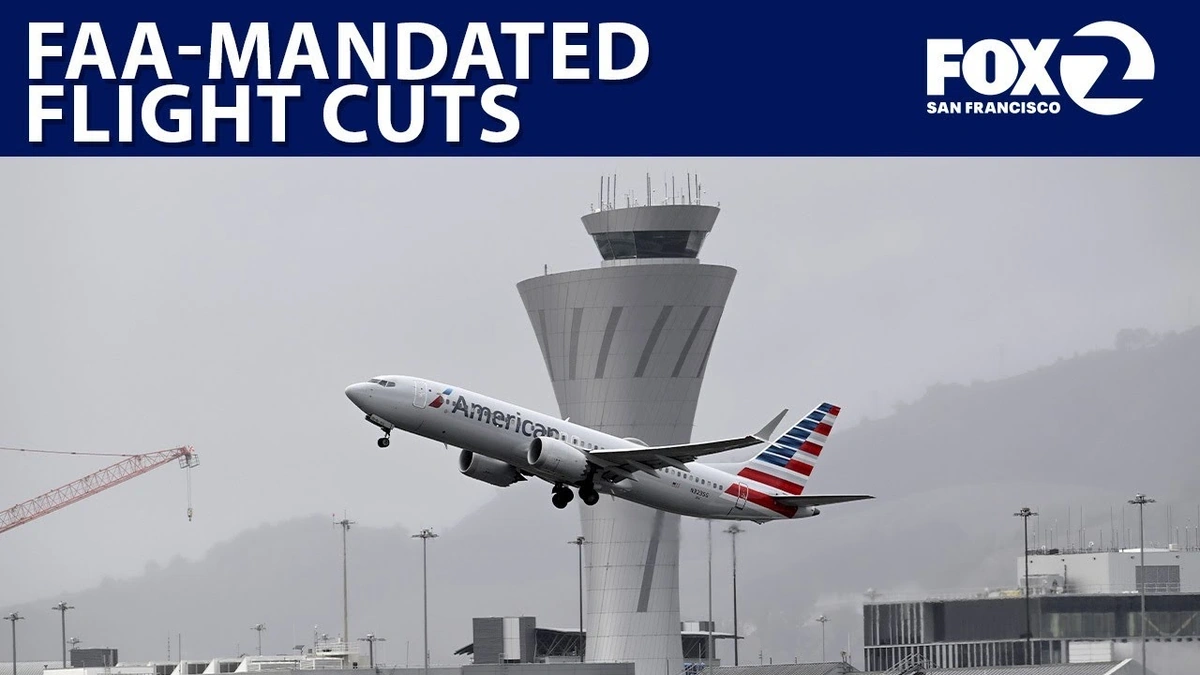So, you’re planning a trip, huh? Maybe a relaxing getaway to Goa, a business trip to Mumbai, or visiting family in Delhi? Well, buckle up, because something happening across the pond in the US could throw a wrench in your plans. We’re talking about FAA flight cuts, and while it sounds like a problem for Americans, the ripples can definitely reach India. But, how? Let’s dive in.
The FAA’s Decision: More Than Just Numbers
The Federal Aviation Administration (FAA) in the United States has been making headlines lately due to a series of air traffic control staffing challenges. These staffing issues, combined with increased air travel demand, have forced the FAA to implement flight cuts – that is, reducing the number of flights operating in and out of certain airports. Now, on the surface, it seems obvious that these changes are primarily for US domestic routes, but FAA flight cuts impact global aviation in several key ways. Here’s the thing: the aviation world is incredibly interconnected.
First, let’s be clear. What fascinates me is how something that seems so geographically distant can have a tangible impact on our lives. The FAA’s decisions aren’t made in a vacuum. They affect airlines, aircraft manufacturers (like Boeing), and, ultimately, passengers worldwide.
How US Flight Cuts Impact International Routes (and You)
The connection might not be immediately obvious. Think about it: many airlines operate on a hub-and-spoke model. Major US airports are hubs for international flights. If there are fewer flights coming into these hubs, it can create bottlenecks and delays that cascade across the entire system. The US air travel system is a complex network.
Here’s how it could play out for you:
- Connecting Flights: If you’re flying to India from, say, Europe or South America, you might have a connecting flight through a US hub like New York (JFK) or Chicago (ORD). FAA flight cuts could cause delays at these hubs, potentially making you miss your connecting flight to India.
- Airline Schedules: Airlines might adjust their schedules in response to the FAA’s actions. This could mean fewer direct flights to India or changes in departure times. Always double check your airline schedule adjustments.
- Increased Fares: Reduced capacity (fewer flights) often leads to higher ticket prices. So, the cost of your flight to India might increase.
Looking Beyond the Immediate Impact: What’s the Real Issue?
It’s easy to get caught up in the immediate inconvenience of potential delays or higher fares. But, let’s be honest, the FAA’s challenges point to a larger issue: the strain on global aviation infrastructure. Post-pandemic, air travel rebounded faster than many anticipated. Airlines and aviation authorities are now scrambling to keep up with the increased demand.
What fascinates me is the domino effect. Pilot shortages , air traffic control staffing shortages, maintenance delays – it all adds up. This isn’t just an American problem; it’s a global challenge that requires coordinated solutions.
According to a recent report by the International Air Transport Association (IATA), the aviation industry is projected to serve 4.7 billion passengers in 2024. That’s a lot of people relying on a system that’s already under pressure!
What Can You Do to Mitigate the Risks?
Okay, so now you know the potential risks. The good news? There are steps you can take to minimize the impact on your travel plans. Experience tells me that preparation is key. Here’s what I recommend:
- Book Early: This is always good advice, but it’s even more crucial now. Booking early gives you more options and potentially better fares.
- Travel Insurance: Make sure your travel insurance covers flight delays and cancellations. It’s a small price to pay for peace of mind.
- Monitor Your Flights: Download your airline’s app and sign up for flight alerts. Stay informed about any potential delays or changes.
- Consider Alternative Routes: If possible, explore alternative routes to India. For example, flying through a European hub might be less risky than flying through a US hub.
- Flexibility is Key: Be prepared to adjust your plans if necessary. The more flexible you are, the easier it will be to navigate any disruptions.
The Future of Air Travel: What to Expect
The FAA is actively working to address the staffing shortages and improve air traffic control efficiency. They’re investing in new technology and hiring more air traffic controllers. According to the FAA website FAA website , they plan to hire and train thousands of new controllers in the coming years.
However, these changes take time. The aviation industry is complex, and solutions don’t happen overnight. In the meantime, travelers need to be aware of the potential disruptions and plan accordingly. So, expect US air traffic control modernization to happen over the next few years.
FAQ About FAA Flight Cuts and Your Travel to India
Will all flights to India be affected by FAA flight cuts?
No, not all flights will be affected. The impact will vary depending on the route, airline, and the specific airport you’re flying through.
How can I check if my flight to India is affected?
The best way to check is to monitor your flight status through your airline’s app or website. You can also sign up for flight alerts to receive notifications about any delays or changes.
What if my connecting flight in the US is delayed due to FAA flight cuts?
Contact your airline immediately. They may be able to rebook you on another flight or provide you with accommodation if needed.
Will ticket prices to India increase due to FAA flight cuts?
It’s possible. Reduced capacity often leads to higher prices. Booking early and being flexible with your travel dates can help you find better deals.
So, there you have it. The US aviation industry might seem far away, but its ripples can definitely reach Indian travelers. By staying informed and planning ahead, you can minimize the impact and still enjoy your trip.
Ultimately, what intrigues me most is the resilience of the aviation industry and the adaptability of travelers. We find ways to navigate these challenges, proving that our desire to connect with the world is stronger than any temporary setback.











